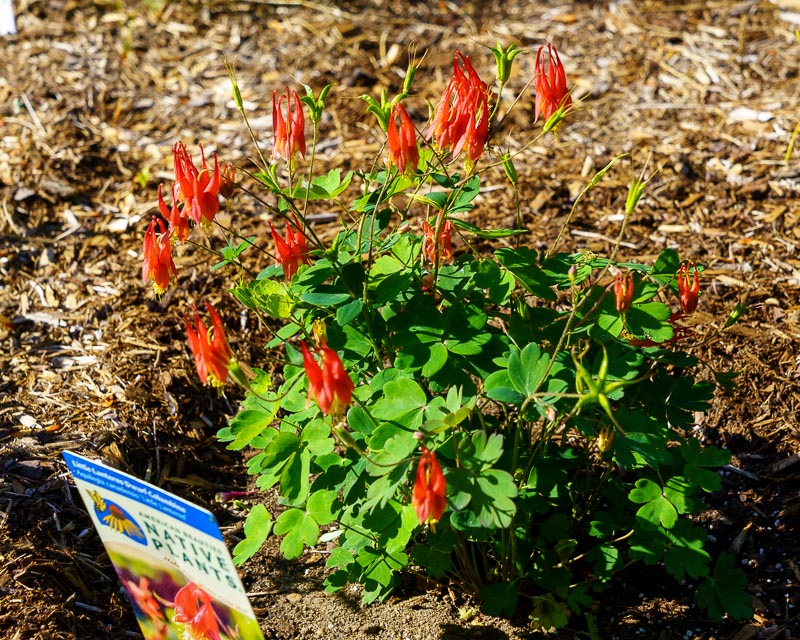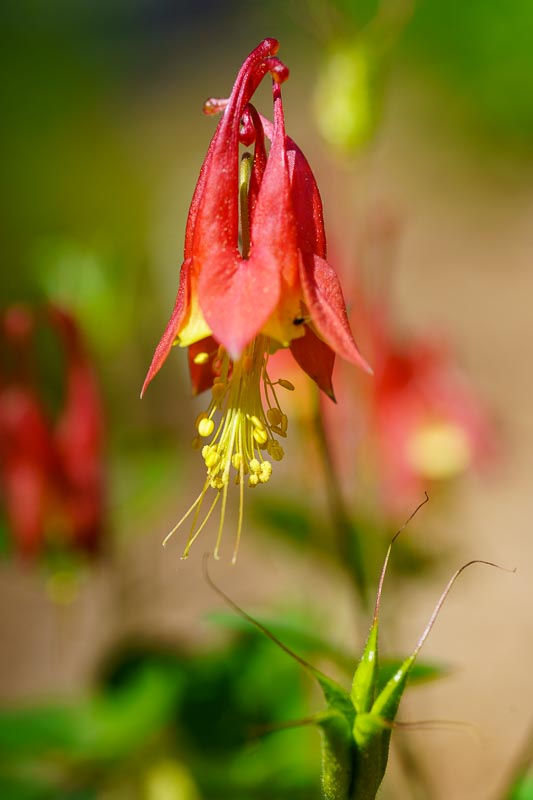Little Lanterns Dwarf Columbine
Common Name:
Little Lanterns Dwarf Columbine
Botanical Name:
Aquilegia canadensis 'Little Lanterns'
Mature Size:
8” - 10” tall; 8” - 12” wide
Sun Exposure:
Full Sun, Partial Shade
Soil Type:
Sandy, loamy, moist but well-drained
Soil pH:
Neutral to slightly acidic
Bloom Time:
Late spring to early summer
Flower Color:
Red, yellow
Care:
These plants do not tolerate hot, full sun well; they decline in the summer. They prefer medium moisture, well-drained soil. However, once established, columbine plants are drought-tolerant perennials. These plants are perfect for rock gardens and woodland gardens. Their attractive foliage makes them suitable as edging plants, and they are also frequently used in cottage gardens.
Soil:
Grow columbine plants in well-drained humusy soil with a neutral to slightly acidic pH. Mix some compost into the soil before planting to provide them with rich organic material. They prefer sandy or loamy soil over clay because good drainage is key.
Water:
Columbine requires moderate soil moisture, so apply water when the top inch or two of soil dries out. As young plants are becoming established, keep the soil evenly moist but never soggy. Established plants only need watering about once a week. Mulch the plants to conserve water in the summer.
Temperature and Humidity:
Columbines are perennial in USDA hardiness zones 3 to 8, but choose a variety that's well-suited for your specific climate. The plants flower best in cooler temperatures. They don't tolerate excessive heat.
Fertilizer:
Use a liquid, water-soluble fertilizer once a month during the growing season (spring to fall) to promote healthy foliage and better blooming. This plant requires phosphorus for healthy root development. Fertilizer too high in nitrogen can affect flower production; try using 5-10-5 NPK fertilizer, which is boosted in phosphorus.
Pruning:
Prune columbine plants back to their healthy base leaves just after blooming. Doing so might promote a second set of stem growth within a few weeks enabling you to enjoy another wave of blooms later in the season. Columbines can be cut back to about one-half of their height after flowering to keep the plant attractive and green for the remainder of the summer.
Overwintering:
Columbines can withstand cold temperatures. At the end of their growing season, remove any wilted columbine foliage and cut columbine stalks to the ground. Flower stalks will regrow next spring, along with any new plants that successfully self-seeded. For extra protection from winter temperatures, scatter a light layer of mulch or decaying leaves around the plant crown.
Source:
https://www.thespruce.com/botany-of-columbine-flowers-2132551
https://www.highcountrygardens.com/perennial-plants/aquilegia/aquilegia-canadensis-little-lanterns

